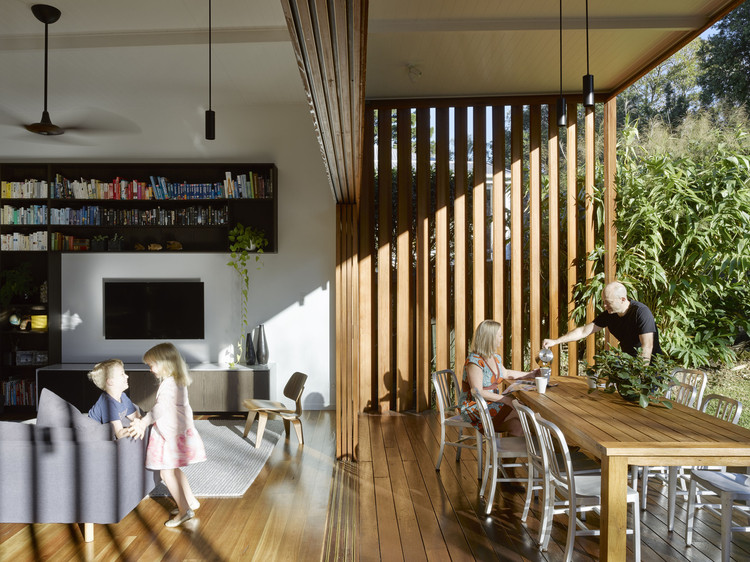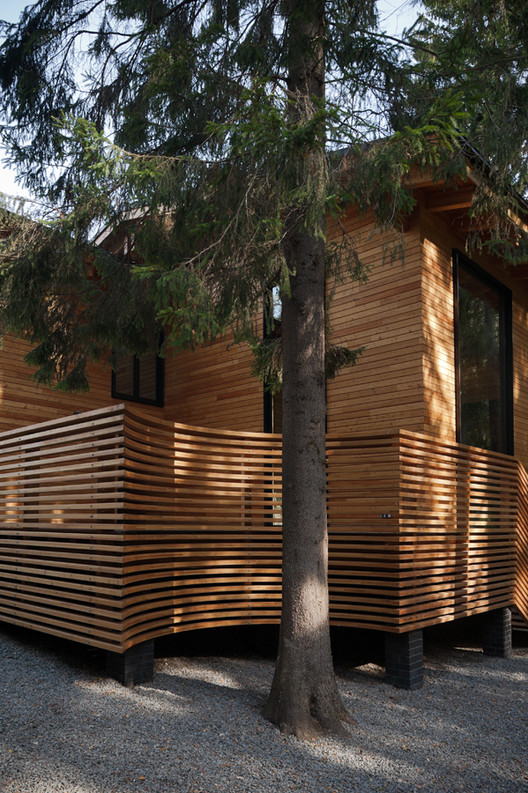After All, Is Using Wood in Architecture Sustainable?

In recent years, we have published many articles about wood. Addressing trends of use, possibilities for log wood, panels, curves, and finishes, innovations in tall building structures, and wood's behavior towards fire, these articles have explicated a wide variety of the material's applications and characteristics. A specific type of wood, Cross Laminated Timber (CLT), has emerged as highly structurally efficient with thermal, seismic, and even sensory benefits, described by specialists as the concrete of the future. But when we post these articles on social media, we frequently encounter comments from our readers concerned about the impact of deforestation. Although we may see wood as a great building material of the future, we must ask ourselves: is it possible to continue cutting down trees and using their wood while still calling it sustainable?

Such a concern is not unreasonable. The use of wood is often associated with deforestation, which not only destroys ecosystems and habitats, but also triggers much-feared climate changes. According to a report [1] by the WWF (World Wide Fund for Nature), it is estimated that the amount of wood removed in the world is expected to triple by the year 2050. The demand for wood and paper tends to grow with an increase in population and income in developing countries; in addition, it is expected that wood use will increase for the manufacture of biofuels, pharmaceuticals, plastics, cosmetics, consumer electronics and textiles.

The State of the World's Forests 2020 Report [2] states that since 1990, an estimated 420 million hectares of forest have been lost through conversion to other land uses, even though the rate of deforestation has decreased over the past three decades. Between 2015 and 2020, the rate of deforestation was estimated at 10 million hectares per year, down from 16 million hectares per year in the 1990s. However, the total area of primary forests worldwide has still decreased by more than 80 million hectares since 1990. Furthermore, over 100 million hectares of forests are adversely affected by forest fires, pests, diseases, drought by invasive species, and adverse climatic events. According to WWF, in 2019, the tropics lost about 30 tree football fields every minute.

The most significant cause of deforestation is the expansion of agriculture and livestock; forest fires have likewise been increasing in frequency and intensity in recent years. Unsustainable logging also triggers degradation. The situation looks bleak, but in the case of civil construction, it is always important to keep in mind that to build almost always requires us to destroy. Each decision in a project will produce some kind of impact on the environment, and understanding how to reduce this impact is vital for real long-term sustainability. Wood is a suitable material to improve sustainability because even with deforestation, wooden buildings are vastly preferable to those built of concrete, brick, aluminum, and steel.


First, wood is a renewable material, if care is taken in its extraction. This means that, unlike non-renewable resources such as oil, coal, stones, or other natural resources, the forest may continue to grow normally even if some trees are cut down. If sustainable forest management is carried out and trees are planted frequently, we may have wood available forever.
When plants perform photosynthesis, they remove CO2 from the atmosphere and store it in the wood. This is what we call “carbon sequestration.” The rate of sequestration is higher during the early growth period of the plant. Therefore, growing forests are a sustainable way to reduce the greenhouse effect, even more so than old forests. (Obviously, keeping old forests intact whenever possible is essential, especially to maintain ecological balance). As pointed out by Think Wood, active forest management, or forest thinning, mitigates forest fires, reduces carbon emissions, replenishes waterways in the area, expands wildlife habitat, and creates jobs in rural areas.


Another positive feature of wood is the low amount of embodied energy, which refers to the sum total of the greenhouse gas emissions attributed to a material throughout its life cycle. Unlike steel or concrete, for example, wood requires a minimal amount of energy-based processing.
A large academic study, summarized in this text, found that replacing other construction materials with wood could reduce 14% to 31% of global carbon dioxide emissions and 12% to 19% of global fossil fuel consumption.
But this process requires care. If forests are harvested more quickly than they are replenished with new trees, there is a real possibility that we may face a severe shortage of wood. As architects, it is essential that we conduct detailed research on the source of all the materials we work with. The designer must be the first to realize that not only are the quality and costs of materials important, but also where they came from and how they were extracted. Another advantage of wood is that many species of wood can be reused if recovered and separated from other waste. Other waste can also be collected and used to make particle board and other modern composite wood products.

When the demand is high for new wood, a way to ensure that the source is safe and non-exploitative is through certification seals. The most traditional is the Forest Stewardship Council (FSC), an independent non-profit organization that promotes responsible management of forests worldwide. Certified wood comes from sustainably managed forests, preventing damage to ecosystems, watersheds, wildlife, and the trees themselves. Certified wood will have the FSC seal attached to its source location. Over 380 million acres of forest are FSC certified globally. According to WWF, about 30 percent of world forest production is certified, around 13% by FSC.

The challenges of the contemporary world in relation to the exploitation and excessive consumption of resources have forced us to rethink many long unchallenged truths. But despite issues of deforestation, wood can still be an extremely sustainable material, as long as it is extracted and treated in a conscious and respectful manner.
Notes
[1] Wood as a Sustainable Building Material. Journal Forest Products. September 2009, Vol. 59, No. 9. Available in this link.
[2] Food and Agriculture Organization of the United Nations. The State of the World's Forests 2020. Available in this link.
"wood" - Google News
December 07, 2020 at 07:30PM
https://ift.tt/33MKUpi
After All, Is Using Wood in Architecture Sustainable? - ArchDaily
"wood" - Google News
https://ift.tt/3du6D7I

No comments:
Post a Comment